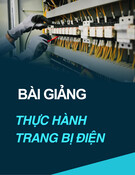再 再 再 再
Chap 4 : Photovoltaic (Solar Cells)
再再再再再再再再再
劉再再
Introduction
再再再再再再再再再
The history of photovoltaics goes back to the year 1839, when Becquere discovered the photovoltaic effect, but no technology was available in the 19th century to exploit this discovery. The semiconductor age only began about 100 years later. After Shockley had developed a model for the pn junction, Bell Laboratories produced the first solar cell in 1954; the efficiency of this, in converting light into electricity, was about 5%. Photovoltaics offers the highest versatility among renewable energy technologies. Theoretically, PV systems could cover the whole electricity demand of most countries in the world.
2/70
Introduction
再再再再再再再再再
Worldwide, the installed photovoltaics capacity and the share of electricity generated by PV are still low, despite impressive market growth. The political environment and magnitude of market introduction programmes will determine the future of this technology.
3/70
The photo effect
Light, with its photon energy, can provide the energy to lift an electron to a higher orbit. The photon energy is given by :
E = h (cid:215) c º
再再再再再再再再再
The energy sufficient to lift the electron to orbit E¥ is also called the ionization energy (external photoelectric effect). photovoltaic cells mainly convert to electricity photons of visible, ultraviolet and infrared light, therefore, the internal photo effect determines the effect of light in a solar cell.
4/70
The photo effect
The highest fully occupied band is called the valence band
The next highest band, which can be partially occupied or totally empty, is called the conduction band
The space between VB and CB is called the forbidden band
The energy gap between the band is called the band gap
再再再再再再再再再
5/70
The photo effect
Photovoltaic (PV) cells are made of special materials called semiconductors such as silicon, which is currently the most commonly used. Basically, when light strikes the cell, a certain portion of it is absorbed within the semiconductor material. This means that the energy of the absorbed light is transferred to the semiconductor. The energy knocks electrons loose, allowing them to flow freely.
再再再再再再再再再
6/70
The photo effect
再再再再再再再再再
Every PV cell has at least one electric field. Without an electric field, the cell wouldn't work, and this field forms when the N-type and P-type silicon are in contact. Right at the junction, electrons and holes mix and form a barrier, equilibrium is reached, and an electric field separating the two sides is formed. This electric field acts as a diode.
7/70
The photo effect
When light, in the form of photons, hits solar cell, its energy frees electron-hole pairs. Each photon with enough energy will normally free exactly one electron, and result in a free hole as well. If this happens close enough to the electric field, or if free electron and hole happen to wander into its range of influence, the field will send the electron to the N side and the hole to the P side. This causes further disruption of electrical neutrality, and if we provide an external current path, electrons will flow through the path to their original side (the P side) to unite with holes that the electric field sent there, doing work for us along the way. The electron flow provides the current, and the cell's electric field causes a voltage.
再再再再再再再再再
8/70
Principle of solar cells
S (º ) =
Not all the energy of photons with wavelengths near the band gap is converted to electricity. The solar cell surface reflects a part of the incoming light, and some is transmitted through the solar cell. Further more, electrons can recombine with holes. The spectral response is given by :
(cid:231) ext (º )
e (cid:215) º h (cid:215) c
再再再再再再再再再
9/70
Principle of solar cells
再再再再再再再再再
10/70
Solar Cell Materials
Silicon (Si)—including single-crystalline Si, multicrystalline Si, and amorphous Si
Polycrystalline thin films—including copper indium diselenide (CIS), cadmium telluride (CdTe), and thin-film silicon
Single-crystalline thin films—including high-efficiency material such as gallium arsenide (GaAs)
再再再再再再再再再
Solar cells can be made from a wide range of semiconductor materials. They are:
11/70
Solar Cell Materials
再再再再再再再再再
The crystallinity of a material indicates how perfectly ordered the atoms are in the crystal structure. Silicon, as well as other solar cell semiconductor materials, can come in various forms: single-crystalline, multicrystalline, polycrystalline, or amorphous. In a single-crystal material, the atoms making up the framework of the crystal are repeated in a very regular, orderly manner from layer to layer. In contrast, in a material composed of numerous smaller crystals, the orderly arrangement is disrupted moving from one crystal to another. One classification scheme for silicon uses approximate crystal size and also includes the methods typically used to grow or deposit such material.
12/70
Solar Cell Materials
Type of Silicon
Abbreviation
Size Range
Deposition Method
Single-crystal silicon
sc-Si
>10cm
Czochralski, float zone
Multicrystalline silicon
mc-Si
1mm-10cm Cast, sheet, ribbon
Polycrystalline silicon
pc-Si
1mm-10mm Chemical-vapor deposition
Microcrystalline silicon mc-Si
<1mm
Plasma deposition
再再再再再再再再再
13/70
Solar Cell Materials
The absorption coefficient of a material indicates how far light having a specific wavelength (or energy) can penetrate the material before being absorbed. A small absorption coefficient means that light is not readily absorbed by the material. Again, the absorption coefficient of a solar cell depends on two factors: the material making up the cell, and the wavelength or energy of the light being absorbed. Solar cell material has an abrupt edge in its absorption coefficient. The reason is that light whose energy is below the material's bandgap cannot free an electron. And so, it isn't absorbed.
再再再再再再再再再
Absorption
14/70
Solar Cell Materials
The bandgap of a semiconductor material is an amount of energy. Specifically, it's the minimum energy needed to move an electron from its bound state within an atom to a free state. This free state is where the electron can be involved in conduction. The lower energy level of a semiconductor is called the "valence band.“ And the higher energy level where an electron is free to roam is called the "conduction band." The bandgap (often symbolized by Eg) is the energy difference between the conduction band and valence band.
再再再再再再再再再
Bandgap
15/70
Solar Cell Materials
再再再再再再再再再
16/70
Solar Cell Types (Silicon)
To create silicon in a single-crystal state, we must first melt high- purity silicon. We then cause it to reform or solidify very slowly in contact with a single crystal "seed.“ The silicon adapts to the pattern of the single-crystal seed as it cools and gradually solidifies. Not surprisingly, because we start from a seed, we say that this process is "growing" a new rod (often called a "boule") of single crystal silicon out of molten silicon.
Several different processes can be used to grow a boule of single- crystal silicon. The most established and dependable processes are the Czochralski (Cz)method and the float-zone (FZ) technique. We also discuss "ribbon-growth" techniques.
再再再再再再再再再
Single-Crystal Silicon
17/70
Solar Cell Types (Silicon)
The most widely used technique for making single-crystal silicon is the Czochralski process, in which a seed of single crystal silicon contacts the top of molten silicon. As the seed is slowly raised, atoms of the molten silicon solidify in the pattern of the seed and extend the single- crystal structure.
再再再再再再再再再
Single-Crystal Silicon
18/70
Solar Cell Types (Silicon)
Multicrystalline Silicon
Multicrystalline silicon devices are generally less efficient than those of single-crystal silicon, but they can be less expensive to produce. The multicrystalline silicon can be produced in a variety of ways. The most popular commercial methods involve a casting process in which molten silicon is directly cast into a mold and allowed to solidify into an ingot. The starting material can be a refined lower-grade silicon, rather that the higher-grade semiconductor grade required for single-crystal material. The cooling rate is one factor that determines the final size of crystals in the ingot and the distribution of impurities. The mold is usually square, producing an ingot that can be cut and sliced into square cells that fit more compactly into a PV module.
再再再再再再再再再
19/70
Solar Cell Types (Silicon)
Amorphous solids, like common glass, are materials whose atoms are not arranged in any particular order. They don't form crystalline structures at all, and they contain large numbers of structural and bonding defects. But they have some economic advantages over other materials that make them appealing for use in solar electric, or photovoltaic (PV), systems. Today, amorphous silicon is common in solar-powered consumer devices that have low power requirements, such as wristwatches and calculators.
再再再再再再再再再
Amorphous Silicon
20/70
Solar Cell Types (Silicon)
Amorphous silicon absorbs solar radiation 40 times more efficiently than does single-crystal silicon, so a film only about 1 micrometer—or one one-millionth of a meter— thick can absorb 90% of the usable light energy shining on it. This is one of the chief reasons that amorphous silicon could reduce the cost of photovoltaics. Other economic advantages are that it can be produced at lower temperatures and can be deposited on low-cost substrates such as plastic, glass, and metal. This makes amorphous silicon ideal for building-integrated PV products like the one shown in the photo. And these characteristics make amorphous silicon the leading thinfilm PV material.
再再再再再再再再再
Amorphous Silicon
21/70
One scientific discovery of the computer semiconductor industry also has great potential in the photovoltaic (PV) industry: thin-film technology. The "thin film" term comes from the method used to deposit the film, not from the thinness of the film: thin-film cells are deposited in very thin, consecutive layers of atoms, molecules, or ions. Thin-film cells have many advantages over their "thick- film“ counterparts. For example, they use much less material—the cell's active area is usually only 1 to 10 micrometers thick, whereas thick films typically are 100 to 300 micrometers thick. Also, thin-film cells can usually be manufactured in a large-area process, which can be an automated, continuous production process. Finally, they can be deposited on flexible substrate materials.
再再再再再再再再再
Solar Cell Types (Polycrystalline thin films)
22/70
Solar Cell Types (Polycrystalline thin films)
Several different deposition techniques can be used, and all of them are potentially less expensive than the ingot growth techniques required for crystalline silicon. We can broadly classify deposition techniques into physical vapor deposition, chemical vapor deposition, electrochemical deposition, or a combination. And like amorphous silicon, the layers can be deposited on various low-cost substrates (or "superstrates") such as glass, stainless steel, or plastic in virtually any shape.
再再再再再再再再再
Thin-Film Deposition
23/70
Solar Cell Types (Polycrystalline thin films)
In addition, these deposition processes can be scaled up easily, which means that the same technique used to make a 2-inch x 2- inch laboratory cell can be used to make a 2-foot x 5-foot PV. Thin films are unlike single-crystal silicon cells, which must be individually interconnected into a module. In contrast, thin-film devices can be made as a single unit—that is, monolithically— with layer upon layer being deposited sequentially on some substrate, including deposition of an antireflection coating and transparent conducting oxide.
再再再再再再再再再
Thin-Film Deposition
24/70
Thin-Film Cell Structure
Unlike most single-crystal cells, a typical thin-film device doesn't have a metal grid for the top electrical contact. Instead, it uses a thin layer of a transparent conducting oxide, such as tin oxide. These oxides are highly transparent and conduct electricity very well. A separate antireflection coating might top off the device, unless the transparent conducting oxide serves that function. Polycrystalline thin-film cells are made of many tiny crystalline grains of semiconductor materials. The materials used in these polycrystalline thin-film cells have properties that are different from those of silicon. So, it seems to work better to create the electric field with an interface between two different semiconductor materials. This type of interface is called a heterojunction ("hetero" because it is formed from two different materials, in comparison to the "homojunction" formed by two doped layers of the same material, such as the one in silicon solar cells).
再再再再再再再再再
Solar Cell Types (Polycrystalline thin films)
25/70
Thin-Film Cell Structure
The typical polycrystalline thin film has a very thin (less than 0.1 micron) layer on top called the "window" layer. The window layer's role is to absorb light energy from only the high-energy end of the spectrum. It must be thin enough and have a wide enough bandgap (2.8 eV or more) to let all available light through the interface (heterojunction) to the absorbing layer. The absorbing layer under the window, usually doped p-type, must have a high absorptivity (ability to absorb photons) for high current and a suitable band gap to provide a good voltage. Still, it is typically just 1 to 2 microns thick.
再再再再再再再再再
Solar Cell Types (Polycrystalline thin films)
26/70
Solar Cell Types (Polycrystalline thin films)
Copper indium diselenide (CuInSe2 or "CIS") has an extremely high absorptivity, which means that 99% of the light shining on CIS will be absorbed in the first micrometer of the material. The most common material for the top or window layer in CIS devices is cadmium sulfide (CdS), although zinc is sometimes added to improve transparency. Adding small amounts of gallium to the lower absorbing CIS layer boosts its bandgap from its normal 1.0 electron-volts (eV), which improves the voltage and therefore the efficiency of the device.
再再再再再再再再再
Copper Indium Diselenide (CIS)
27/70
Cadmium Telluride (CdTe)
Cadmium telluride is another prominent polycrystalline thin-film material. With a nearly ideal bandgap of 1.44 eV, CdTe also has a very high absorptivity. Like CIS, films of CdTe can be manufactured using low-cost techniques. Also like CIS, the best CdTe cells employ a heterojunction interface, with cadmium sulfide (CdS) acting as a thin window layer. Tin oxide is used as a transparent conducting oxide and antireflection coating. One problem with CdTe is that p-type CdTe films tend to be highly resistive electrically, which leads to large internal resistance losses. A solution is to allow the CdTe layer to be intrinsic (that is, neither p-type nor n-type, but natural), and add a layer of p-type zinc telluride (ZnTe) between the CdTe and the back electrical contact. When it comes to making CdTe cells, a wide variety of methods are possible, including closed-space sublimation, electrodeposition, and chemical vapor deposition.
再再再再再再再再再
Solar Cell Types (Polycrystalline thin films)
28/70
Solar Cell Types (Polycrystalline thin films)
The term "thin-film silicon" typically refers to silicon-based PV devices other than amorphous silicon cells and single-crystalline silicon cells (where the silicon layer is thicker than 200 micrometers). These films have high absorptivity of light and may require cell thicknesses of only a few micrometers or less. Nanocrystalline silicon and small-grained polycrystalline silicon— considered thin-film silicon—may be able to replace amorphous silicon alloys as the bottom cell in multijunction devices. As with other thin films, advantages include the savings of material, monolithic device design, use of inexpensive substrates, and manufacturing processes that are low temperature and possible over large areas.
再再再再再再再再再
Thin-Film Silicon
29/70
Gallium arsenide (GaAs) is a compound semiconductor: a mixture of two elements, gallium and arsenic. Gallium is rarer than gold. Arsenic is not rare, but it is poisonous. GaAs is especially suitable for use in multijunction and high-efficiency solar cells, for several reasons:
The GaAs bandgap is 1.43 eV, nearly ideal for single-junction solar cells. GaAs has an absorptivity so high it requires a cell only a few microns thick to absorb sunlight. Unlike silicon cells, GaAs cells are relatively insensitive to heat. Cell temperatures can often be quite high, especially in concentrator applications. GaAs allowing great flexibility in cell design. GaAs is highly resistant to radiation damage. This, along with its high efficiency, makes GaAs desirable for space applications.
再再再再再再再再再
Solar Cell Types (Single-crystalline thin films)
30/70
Solar Cell Types (Single-crystalline thin films)
One of the greatest advantages of gallium arsenide and its alloys as PV cell materials is that it's amenable to a wide range of designs. A cell with a GaAs base can have several layers of slightly different compositions; this allows a cell designer to precisely control the generation and collection of electrons and holes. This degree of control allows cell designers to push efficiencies closer and closer to theoretical levels.
The greatest barrier to the success of GaAs cells has been the high cost of a singlecrystal GaAs substrate. For this reason, GaAs cells are used primarily in concentrator systems, in which a typical concentrator cell measures only about 0.25 cm2 in area but can produce ample power at high concentrations.
再再再再再再再再再
GaAs solar cell
31/70
Solar Cell Efficiency
Maximum efficiency determined by material band gap: High band gap has high voltage and low current.
Practical efficiency depends on technology and cost of fabrication methods, with high cost processes giving higher efficiency.
再再再再再再再再再
Two key determinants of solar cell efficiency:
32/70
Solar Cell Types
再再再再再再再再再
33/70
Solar Cell Types
再再再再再再再再再
34/70
Solar Cell Technologies
Dominant technology is silicon, due to its abundance, ease of processing and use by the Integrated Circuit (IC) industry. Two dominant silicon materials used: single crystalline (higher cost, higher efficiency) and multicrystalline (lower efficiency,lower cost).
再再再再再再再再再
35/70
Solar Cell Technologies
Production technology determines how close to theoretical efficiency a material can reach.
Fabrication technology developed for other electronic devices (IC, optical devices) gives high efficiency, but also high cost due to high area-based costs.
IC processing technology gives 24.7%
再再再再再再再再再
36/70
Solar Cell Technologies
IC processing techniques typically too expensive due to batch nature, high capital costs and time consuming nature. Commercial solar cells use reduced cost technologies, particularly regarding how to get thin, narrow metal lines. Dominant technology is screen printing on belt furnaces.
再再再再再再再再再
37/70
Solar Cell Technologies
再再再再再再再再再
Highest efficiencies are reached by making tandem solar cells, which consist of multiple solar cells stacked on top of one another. Each solar cell absorbs light with energy close to its band gap, allowing overall higher efficiency. Maximum thermodynamic efficiency is 86.8%, but material limitations give maximum efficiencies of just over 30%. Used primarily in space markets
38/70
Solar Cell Technologies
Thin films photovoltaics describe a class of solar cells in which a thin layer(s) of semiconductor material is deposited on to a low cost inactive substrate.
Material can be silicon, amorphous silicon, or combinations primarily from groups II & VI of the periodic table, including CdTe and CIGS (copper indium gallium disellenide), CdS(cadmium sulfide)
Thin films offer potential for low cost, but due to non-uniform material, larger devices suffer from low efficiency.
再再再再再再再再再
39/70
Solar Cell Technologies
Emerging technologies include both approaches for ultra-high efficiency and very low cost.
Organic solar cells: Offer potential for lower cost, flexible substrates, but presently have low efficiencies and stability issues.
Dye-sensitized solar cells: use an dye to absorb light, embedded in a titanium dioxide base. Can theoretically achieve good control over absorption and low cost.
Ultra-high efficiency approaches: based on advanced microelectronic concepts, such as quantum wells and quantum dots.
再再再再再再再再再
40/70
Solar Cell Technologies
Concentrators allow increases in efficiency.
Concentrators also allow potential cost savings by allowing use of small, high efficiency solar cells and by replacing expensive solar cells with lower cost optics.
Extra system components make concentrating systems primarily suited towards larger systems.
再再再再再再再再再
41/70
Solar Cell Applications
Crystalline silicon
Flat plates
Thin films
再再再再再再再再再
New technologies
42/70
Solar Cell Applications
Silicon
Concentrators
再再再再再再再再再
Multijuctions
43/70
Solar Cell Market Share
Technology Type
MW
%
Flat plates –Single crystal silicon
403.5
33.8
Cast polycrystalline silicon
669.1
56.0
Ribbon silicon
41.0
3.4
Thin film amorphous silicon
64.6
5.4
Thin film cadmium telluride
13.0
1.1
Thin film CIGS
3.0
0.3
Concentrators –Silicon
0.5
<0.05
TOTALS
1194.7
100
再再再再再再再再再
44/70
Solar Cell Modules
Individual solar cells are encapsulated into a module in order to increase power, increase voltage, protect solar cells from environment, and protect people.
Solar cells are nearly always connected in series in the modules, and they typically consist of ~36 solar cells.
再再再再再再再再再
45/70
Solar Cell Modules
Solar cell efficiency (%) = Power out (W ) (cid:215)
Area (m 2 ) (cid:215)
100% 1000 W / m 2 再再再再再再再再再
46/70
PV System
PV Terminology
再再再再再再再再再
system
47/70
Solar Cell Model
Simple equivalent circuit
(cid:230)
= - I
ł ł
I ph = c0 (cid:215)
E
Ł Ł m (cid:215) VT
I = I -
I
ł ł
Ł Ł
m (cid:215) VT
(cid:230) -
(cid:246) (cid:246)
再再再再再再再再再
48/70
(cid:230) VD
(cid:247) - (cid:231) (cid:247) I = - I D s (cid:215) (cid:231) exp (cid:231) 1(cid:247)
VD
(cid:247) -
(cid:230)
I = I ph D ph s (cid:215) (cid:231)
exp (cid:231)
1(cid:247)
(cid:231) (cid:247)
Solar Cell Model
再再再再再再再再再
I-V characteristics
49/70
Solar Cell Model
Solar cells are high current devices, and hence suffer from significant resistive losses, particularly in top metal contacts.
Resistances reduce the FF and hence the solar cell efficiency. Resistive and reflective losses are coupled, and the degreeto which these can be minimized depend on fabrication technology.
再再再再再再再再再
50/70
Solar Cell Model
再再再再再再再再再
One diode model
51/70
Solar Cell Model
One diode model
(cid:246) (cid:246)
V + I (cid:215)
RS
(cid:230)
(cid:247) - -
I 0 = I ph s (cid:215) (cid:231)
exp (cid:231)
RS I
Ł Ł
1(cid:247)
(cid:247) - ł ł
(cid:230) V + I (cid:215) m (cid:215) VT
RP
f (V , I ) = 0
- (cid:231)
Vi + 1 = Vi -
Vi - Vi - 1 < (cid:229)
f (Vi , I g ) df ( V i , I g ) dV f (Vi , I g ) df ( V g , I i )
dI
再再再再再再再再再
I i + 1 = I i -
I i - I i - 1 < (cid:229)
52/70
Solar Cell Model
再再再再再再再再再
One diode model (Influence of RS)
53/70
Solar Cell Model
再再再再再再再再再
One diode model (Influence of RP)
54/70
Solar Cell Model
Two diode model
(cid:246) (cid:246)
V + I (cid:215)
RS
V + I (cid:215)
I 0 = I ph s1 (cid:215) (cid:231)
exp (cid:231)
I s 2 (cid:215) (cid:231)
(cid:246) (cid:246) (cid:230) exp (cid:231) ł ł Ł Ł
V + I (cid:215) Ł Ł
(cid:247) - - ł ł
RS 1(cid:247) (cid:247) - m2 (cid:215) VT
RS (cid:247) - 1(cid:247) - m1 (cid:215) VT
RP
再再再再再再再再再
(cid:230) (cid:230) (cid:230) - (cid:231)
55/7 0
Solar Cell Model
V + I (cid:215)
R (cid:246) (cid:246)
R (cid:230)
V + I (cid:215)
R
Ł Ł m1 (cid:215) VT ł ł Ł Ł m2 (cid:215) VT ł ł RP Ł VBr ł
(cid:230) Two diode model with expansion term V + I (cid:215) (cid:230)
(cid:246)
(cid:246)
(cid:230)
n
-
RS S S S (cid:246)
0 = I ph -
I s1 (cid:215) (cid:231)
V + I (cid:215) exp (cid:231) (cid:247) -
1(cid:247) -
I s 2 (cid:215) (cid:231)
exp (cid:231) (cid:247) -
1(cid:247) - -
b (cid:215)
(V + I (cid:215)
RS ) (cid:215) (cid:231)
1- (cid:247)
再再再再再再再再再
(cid:230)
56/70
Solar Cell Model
再再再再再再再再再
Two diode model with expansion term
57/70
Solar Cell Model
I sc @
I ph = c0 (cid:215)
E
Short circuit current
Open circuit voltage
VOC = m (cid:215) VT (cid:215)
Ł (cid:230) I SC (cid:246) ln (cid:231) + 1(cid:247) I S ł
再再再再再再再再再
VOC @ ln(E)
58/70
Solar Cell Model
再再再再再再再再再
Maximum Power Point
59/70
Fill Factor and Efficiency
The maximum power points are related to the maximum voltage and current by defining a parameter called fill factor. The fill factor (FF) is the maximum rectangle that can fit under the solar cell IV curve. FF is a measured or numerically calculated parameter.
Vmp I mp
Voc I sc FF =
Efficiency for solar cell:
(cid:231) = V oc I sc FF
Pin
再再再再再再再再再
60/70
Effect of Temperature
The performance of solar cells is affected by temperature, and solar cell voltage will decrease as the temperature increases.
The temperature decrease depends on the open circuit voltage and the band gap of the material used to make the solar cell.
Higher voltage solar cells are less sensitive to higher temperatures.
Thin-film solar cells can also be relatively temperature insensitive due to improvement of material parameters. Silicon solar cells loose 2.2 mV/ °C.
再再再再再再再再再
61/70
Parameter Estimation
= @
Diode saturation current
VT ł
(cid:230)
I - VOC (cid:246) Ł VT ł
Ł
Parallel resistance
RP
RS @
¶ V ¶ I V = 0 @
V >> VOC
再再再再再再再再再
Series resistance ¶ V ¶ I
62/70
VOC (cid:246)
I SC (cid:230) exp (cid:231) (cid:247)
I S SC (cid:215) exp (cid:231) (cid:247) -
1
Photovoltaic Module
n
V = (cid:229)
Vi
i = 1
再再再再再再再再再
I = I1 = I 2 = ...I n V = n (cid:215) Vi
63/70
Photovoltaic Module
VOC = VOC 0 (cid:215) ln(E) / ln(E1000 ) (cid:215) (1 + Æ V (T - T25 ))
VMPP = VMPP 0 (cid:215) ln(E) / ln(E1000 ) (cid:215) (1 + Æ V (T - T25 ))
I (T -
I MPP = I MPP 0 (cid:215) E / E1000 (cid:215) (1 + Æ T25 ))
I (T -
I SC = I SC 0 (cid:215) E / E1000 (cid:215) (1 + Æ T25 ))
c1 = I SC (cid:215) exp(- c2 (cid:215) VOC )
c2 = ln(1 - I MPP / I SC ) /(VMPP - VOC )
再再再再再再再再再
I = I SC - c1 (cid:215) exp(c2 (cid:215) V )
64/70
Photovoltaic Module
The interconnection of solar cells can cause significant power losses if the operating points of all modules are not identical. Mismatch occurs a solar cells is shaded. Since solar cells are series connected, reduction of current in one solar cell limits the current in the series connected string. Instead of all solar cell being at short circuit, a voltage is generated.
再再再再再再再再再
65/70
Photovoltaic Module
再再再再再再再再再
V = VS (I ) + 35 (cid:215) VF (I )
66/70
Photovoltaic Module
The voltage across the unshaded solar cells is dropped across the shaded solar cell.
再再再再再再再再再
The power dissipation in the shaded solar cell creates local heating, which can permanently damage to module or solar cell.
67/70
Photovoltaic Module
再再再再再再再再再
Mismatch losses can be minimized by inserting a by-pass diode across several of the solar cells.
68/70
Photovoltaic Module
再再再再再再再再再
69/70
Photovoltaic Module
n
I = (cid:229)
i = 1
再再再再再再再再再
V = V1 = V2 = ...Vn



































